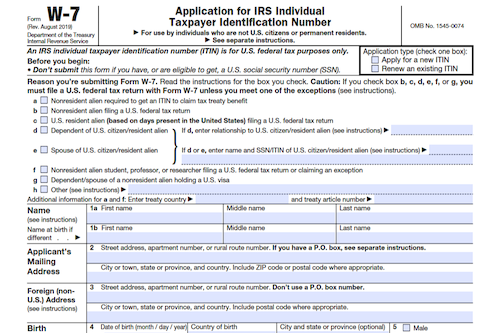Need help figuring out Form 4972 for filing your 2023 return? This article outlines how to calculate the taxable part of a lump-sum distribution when making the 20% capital gain election for the recipient.
What is Form 4972?
Form 4972 is a form used by individuals to report the taxable portion of Qualified Lump-Sum Distributions from pension plans. It is required to be completed when filing with either an original or amended return. Form 4972 must be completed with information from Form 1099-R. It includes several sections such as Parts I and II, for different calculations, and Part III, for recipients with more than one qualified distribution. Death benefit exclusions may also be available to eligible beneficiaries, and federal estate tax must be taken into consideration before completing the form. Step by step instructions are available on the form to help with filing.
IRS Form 4972 – Who Needs to Fill It Out?
IRS Form 4972 is necessary for taxpayers who received a qualified distribution from a qualified retirement plan in 2023. Eligibility requirements include filing an original or amended return within three years after the date the original return was filed or within two years after the date the tax was paid. Participants are required to complete Part II if the distribution includes a capital gain amount, and Part III regardless. If more than one recipient was involved or the recipient passed away before August 21, 1996, additional instructions apply. Any federal estate tax paid on the lump-sum distribution must be accounted for in specific lines of the form.
Step-by-Step: Form 4972 Instructions For Filling Out the Document
Form 4972 is used to report and pay taxes on a lump sum distribution that many receive from a qualified retirement plan. As you complete the form, you first need to fill in the recipient’s name and identifying number at the top and decide if you want to make a 20% capital gain election, as this will affect the details that are entered in the rest of the form. If the distribution includes NUA, you will need to complete the NUA Worksheet to determine the amount that qualifies for capital gain treatment. If there are multiple recipients of the distribution, you must file a separate Form 4972 for each. After that, you will need to complete the Death Benefit Workseet if there was any federal estate tax paid; this will determine the amount to enter on line 6. Finally, use the Tax Rate Schedule for lines 24 and 27 and the instructions for recipients of lump-sum distributions to fill out the rest of the form.
Below, we present a table that will help you understand how to fill out Form 4972.
| Information Required for Form 4972 | Details |
|---|---|
| Purpose of Form | Report and pay taxes on lump sum distributions from qualified retirement plans |
| Form Completion | Fill in recipient’s name and identifying number, determine capital gain election, complete NUA Worksheet, attach Death Benefit Worksheet if necessary |
| Multiple Recipients | File a separate Form 4972 for each recipient if there are multiple recipients |
| Tax Rate Schedule | Use Tax Rate Schedule for specific lines on the form |
Do You Need to File Form 4972 Each Year?
Yes, Form 4972 should be filed each year when a lump-sum distribution is received from a qualified retirement plan. With an original or amended return, Form 4972 must generally be filed within 3 years after the date the original return was filed or within 2 years after the date the tax was paid, whichever is later. Depending on the amount of the distribution, it could include a capital gain amount. If it does, you can make the 20% capital gain election or choose to treat the capital gain as ordinary income, with taxable amount determined by various worksheets. If you are sharing the distribution with other trusts or beneficiaries, further instructions can be found on the form and related publications.
Download the official IRS Form 4972 PDF
On the official IRS website, you will find a link to download Form 4972. However, to make it easier for you, we are providing the link in our article, which comes directly from the official irs.gov website! Click to download: Form 4972
Sources:




